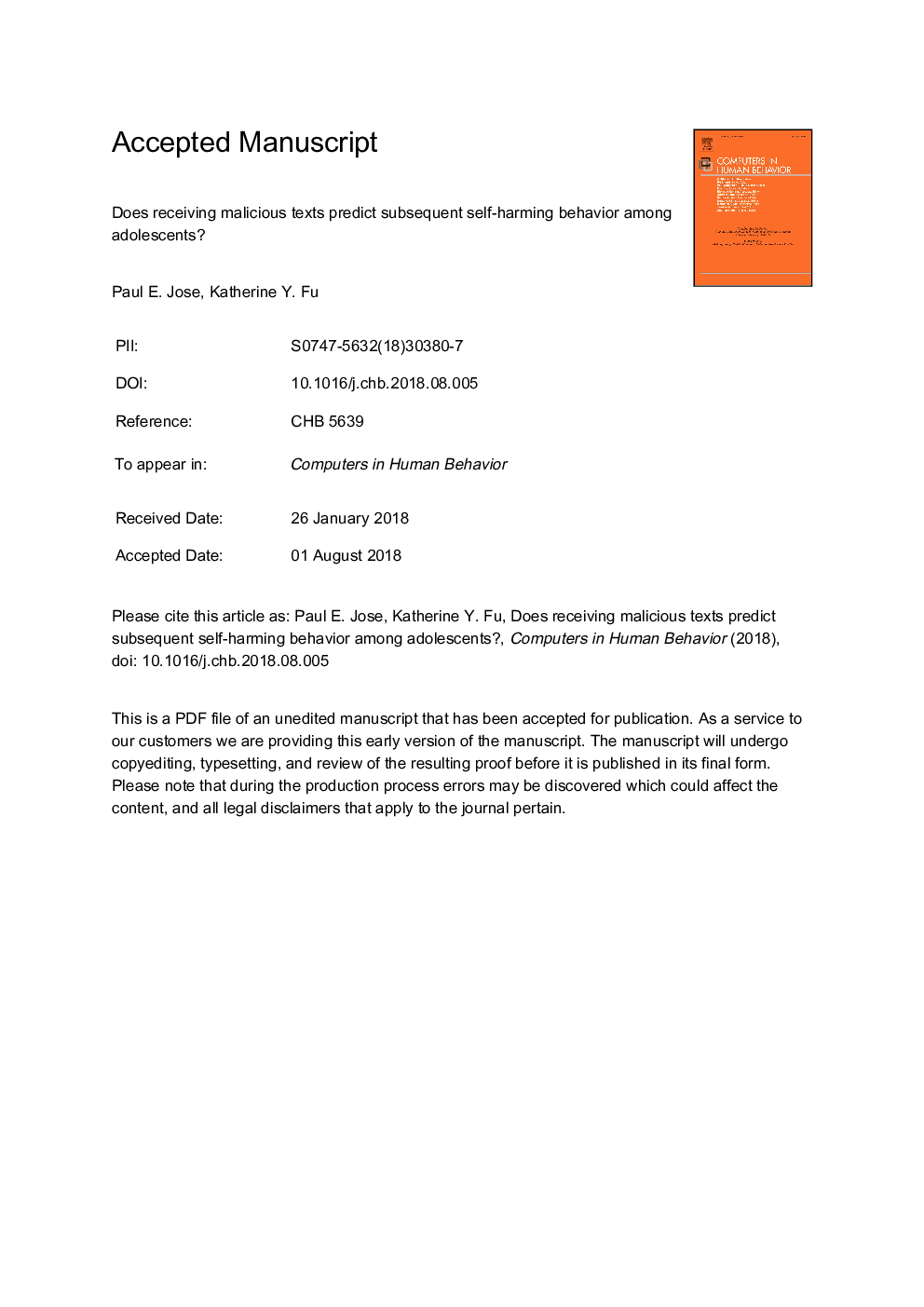| Article ID | Journal | Published Year | Pages | File Type |
|---|---|---|---|---|
| 11002130 | Computers in Human Behavior | 2018 | 27 Pages |
Abstract
The present study was designed to determine whether adolescents who receive malicious text messages are subsequently more likely to engage in self-harming behavior since empirical support for this hypothesis is lacking. A sample of 1276 adolescents aged 10-15 years of age at T1 completed annually over three years self-report measures of frequencies of sending and receiving malicious texts as well as frequencies of self-harming ideation and behavior. To test the hypotheses, a longitudinal cross-lag path model was tested with structural equation modelling. Consistent with the main hypothesis, adolescents who received a greater number of malicious texts were found to be more likely one year later to engage in self-harming. In addition, self-harming predicted higher levels of both sending and receiving malicious texts one year later, suggesting that self-aggression may be related to other-aggression. And last, a reciprocal relationship between sending and receiving malicious texts was noted, lending support to the view that peers often retaliate against individuals who send aggressive texts. The results suggest that hurtful digital communication messages can have long-lasting deleterious impact.
Keywords
Related Topics
Physical Sciences and Engineering
Computer Science
Computer Science Applications
Authors
Paul E. Jose, Katherine Y. Fu,
